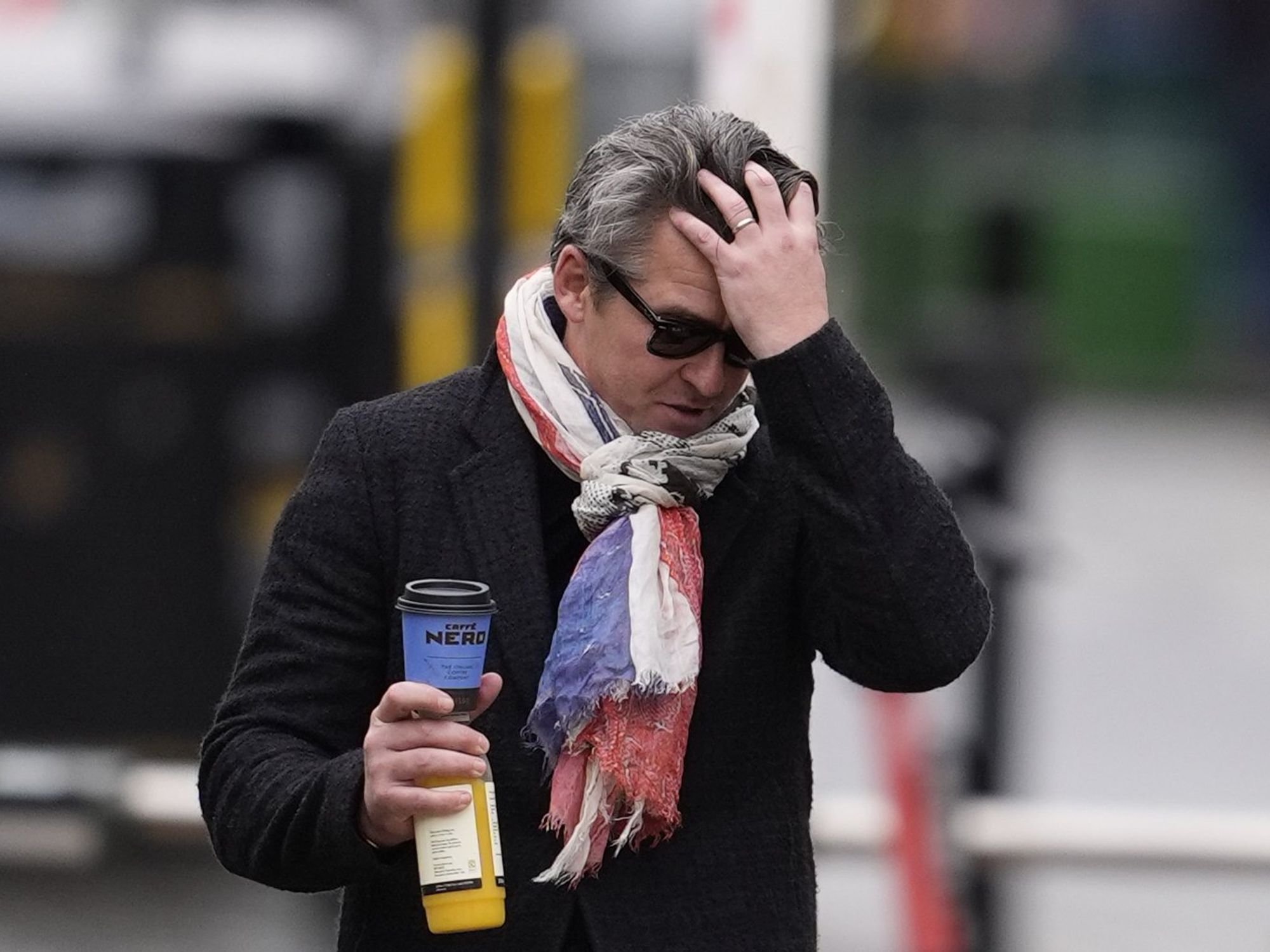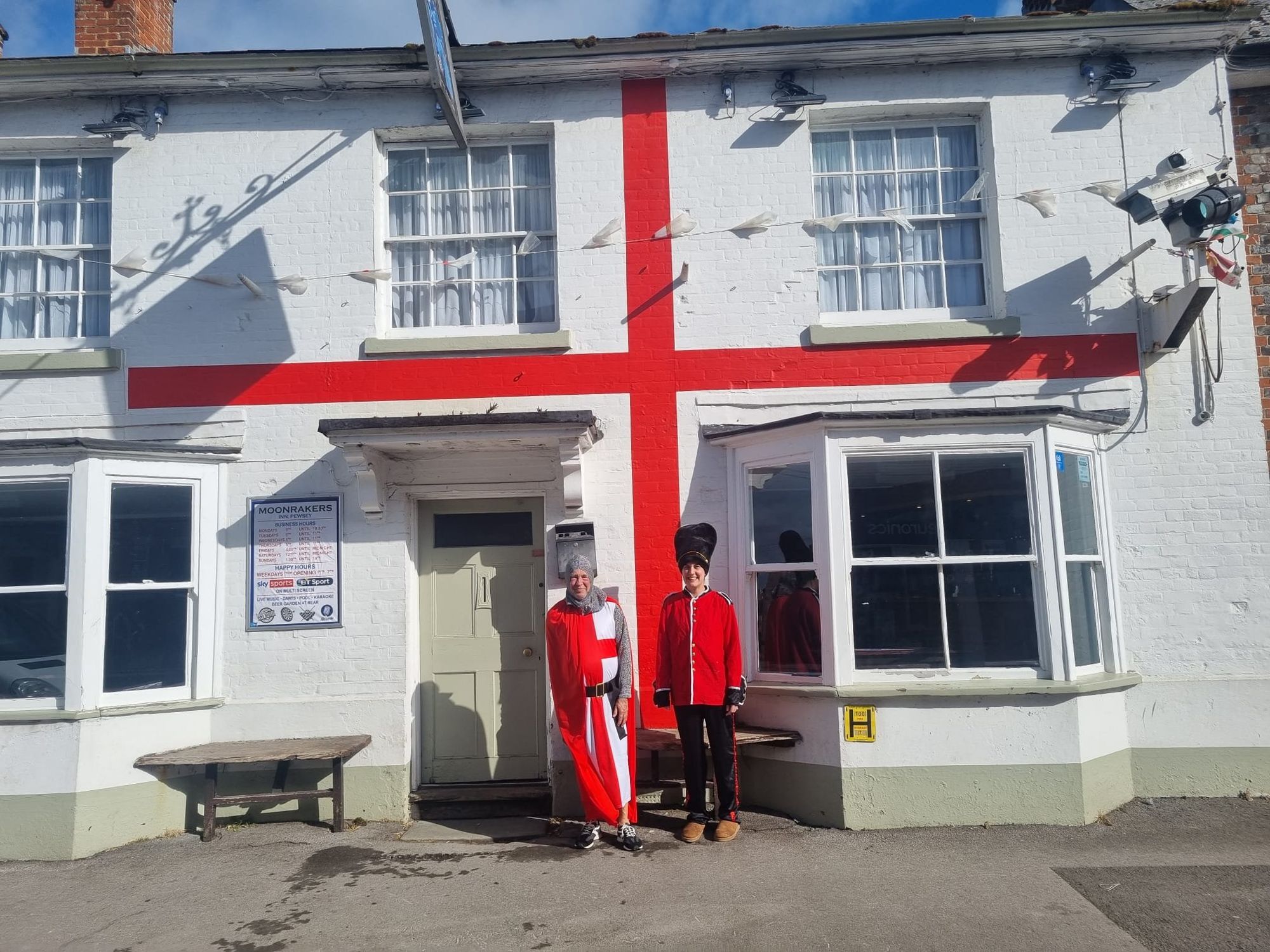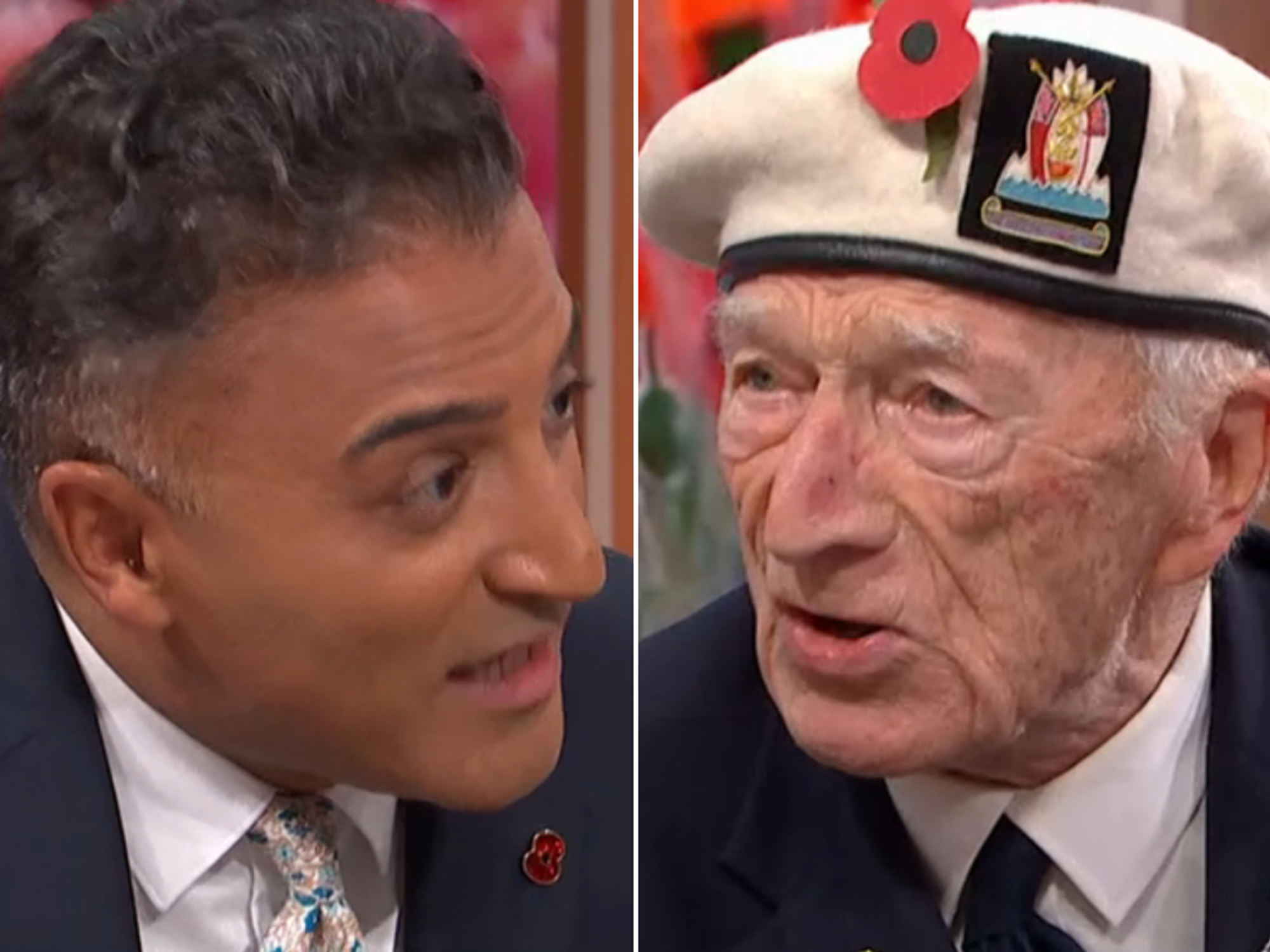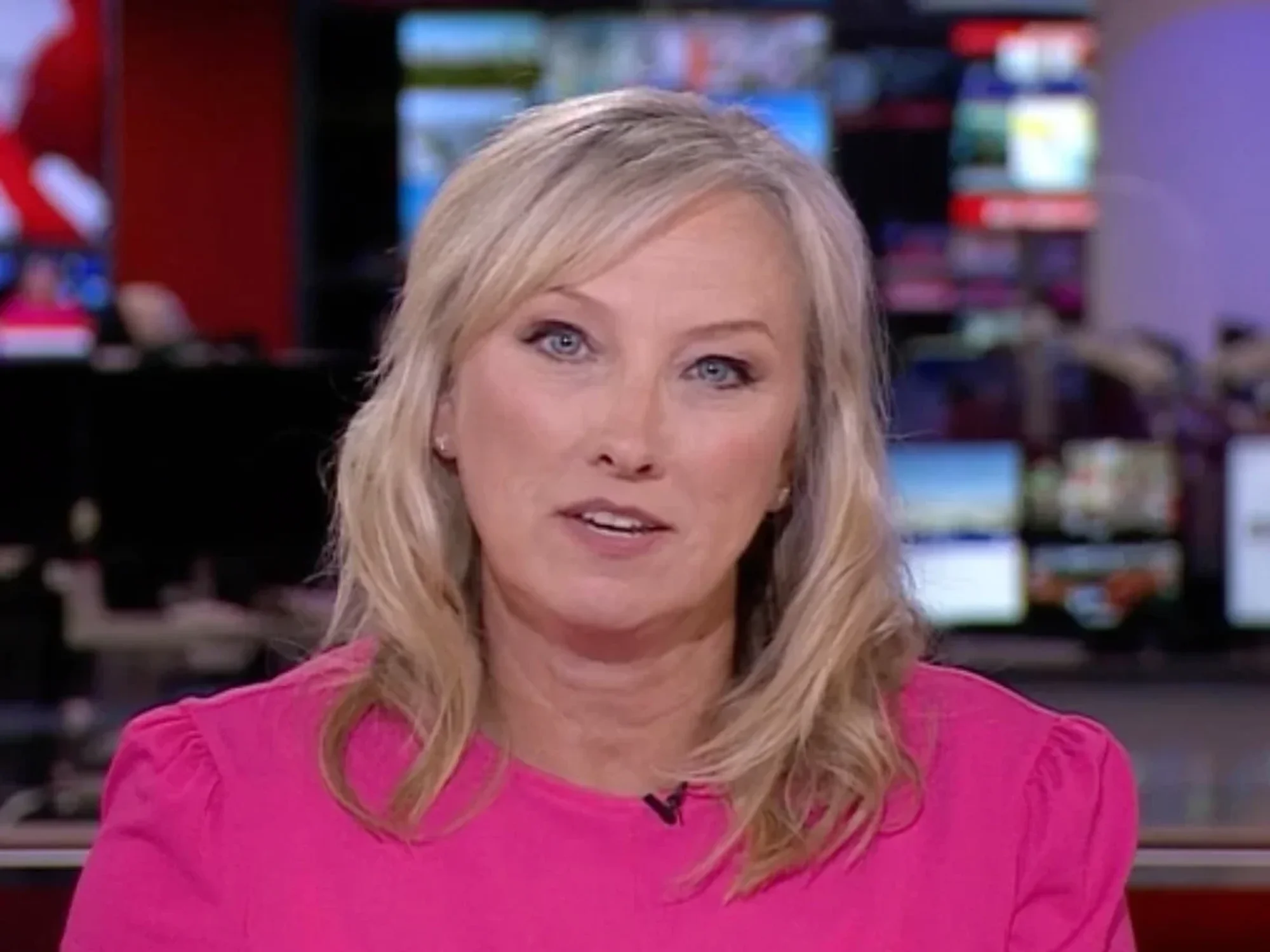Royal Mail stamps scandal: Innocent Britons forced to pay for mail after Post Office sells counterfeit stamps

Britons have been left furious and fearing they look like criminals, despite buying the stamps from reputable shops
Don't Miss
Most Read
Latest
Royal Mail has charged innocent Britons £5 to get their post after senders unknowingly used fake stamps which were bought from Post Office and some well-known stores.
An investigation by GB News has found books of stamps bought directly from Post Office and some local supermarkets have been deemed “counterfeit”.
Affected recipients are now having to fork out £5 to get their letters – four times the cost of a standard first class stamp – after Royal Mail doubled the surcharge from £2.50 on October 30.
GB News has seen examples of first and second class stamps bought from Post Office sites being branded counterfeit. Examples include stamps with Queen Elizabeth II’s profile as well as the new King Charles III definitive.
Have you been affected by this issue? Get in touch by emailing money@gbnews.uk.
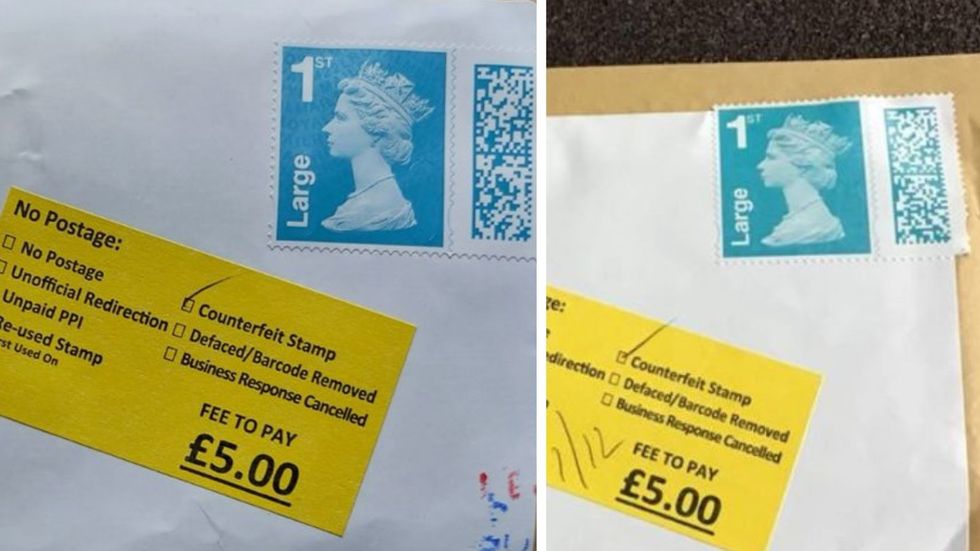
A small business owner fears for his reputation after the stamps he used were deemed counterfeit
|GB NEWS
We have discovered cases at different locations across the UK, including Birmingham, Sussex, Nottingham and London.
A small business owner who bought 100 stamps from his local Post Office and village store fears his reputation is in tatters after his customers were forced to pay an extra £5 for their order.
It’s left him hundreds of pounds out of pocket as he had no choice but to create more products and send them via special delivery to the affected clients.
Eric Schroter, 57, from West Sussex, told GB News: “My customers were charged £5 to get their letters and my company reputation is now tarnished.”
The businessman, who uses Post Office daily, bought two sheets of 50 large letter first-class stamps from the shop in a Post Office in late October 2023 and used five of them at the start of November.
He later learned those letters had been deemed counterfeit but it never crossed his mind that there could be an issue with the stamps.
Mr Schroter said: “I couldn’t believe they were fake because I bought them from Post Office. I didn’t have any suspicions they were fake, I just thought Post Office had messed up or something.”
Fast forward to the end of November, Mr Schroter affixed the remaining stamps to orders and sent them off.
To his shock, he was soon inundated with complaints from more than 40 customers regarding a £5 surcharge.
Mr Schroter has complained to Post Office and Royal Mail but feels he has been “pushed pillar to post”. He said: “I’ve filled in the Royal Mail complaint form four or five times and they just say, ‘It’s nothing to do with us.’
“I’ve been fobbed off by Post Office and Royal Mail, insisting it’s ‘nothing to do with them’ or telling me to contact the other company. They just don’t want to know.”
GB News has seen evidence of the stamps being bought at Post Office and the flood of photos from irate customers, showing envelopes with a yellow “counterfeit” sticker attached.
Mary Adams*, 68, told GB News she bought several books of first and second class stamps from her local store which contains a Post Office in early December, so she could mail out Christmas cards.
But rather than spread festive cheer as she’d hoped, several recipients have contacted Miss Adams to say the second class stamps had been branded “counterfeit” and they’d had to give Royal Mail £5 to get the cards.
LATEST DEVELOPMENTS:
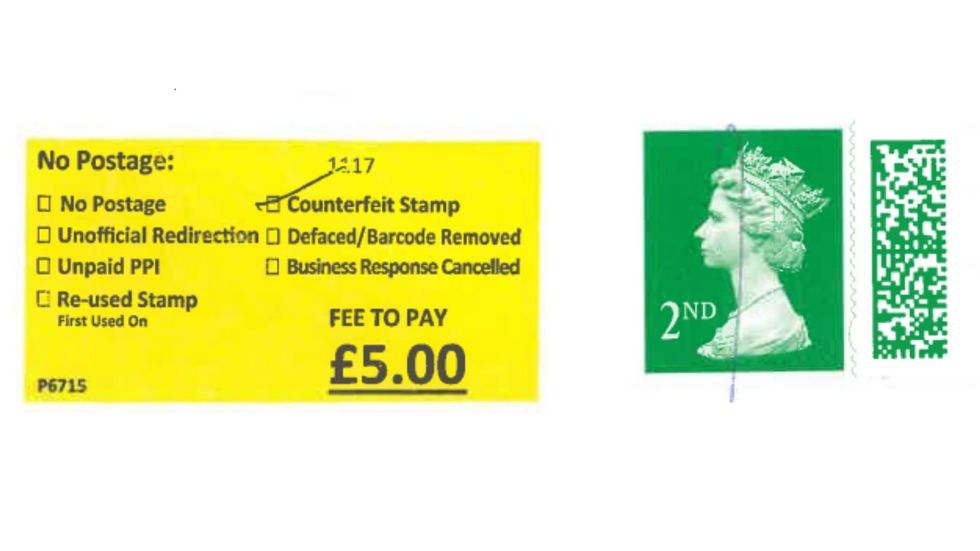
Miss Adams sent herself a letter with the first class stamp, which was subsequently labelled 'counterfeit' by Royal Mail
|GB NEWS
She was first made aware of the problem on December 13 after a friend who lives locally got a note through his door, directing him to collect his post from the delivery office, due to insufficient postage. Thinking it might be something bigger, he paid a visit to the delivery office, to discover the letter with a sticker branding the stamp “counterfeit”.
The friend contacted her to let her know, and told GB News: “I thought, at the time, why are we being charged when we are the victims? Also, our friend who sent the card is also a victim.”
Miss Adams, who lives in London, said: “At the time, I did wonder if it was perhaps a sheer fluke, maybe something had gone wrong with the system, or perhaps some overzealous postal worker at the sorting office or something.
“I thought, ‘How can it be counterfeit?' Because I’d bought it in these little envelopes from Royal Mail.’”
Shortly after Christmas, Miss Adams decided to investigate further. Out of “idle curiosity”, she sent herself a letter using one of the second class stamps she had left over.
She said: “I really didn’t think anything of it until I suddenly got a text on Monday [January 8], from a friend in Streatham basically with the same story – she’d got a card through the door about an item at the delivery office and went to collect it.”
Because of the high £5 fee, Miss Adams’ friend had assumed it was a parcel so went to pick it up.
When she recognised the handwriting on the envelope, she paid the £5, and let Miss Adams know about what had happened.
Just like two of her friends, Miss Adams received a Royal Mail note last week, stating she must pay £5 to get the letter.
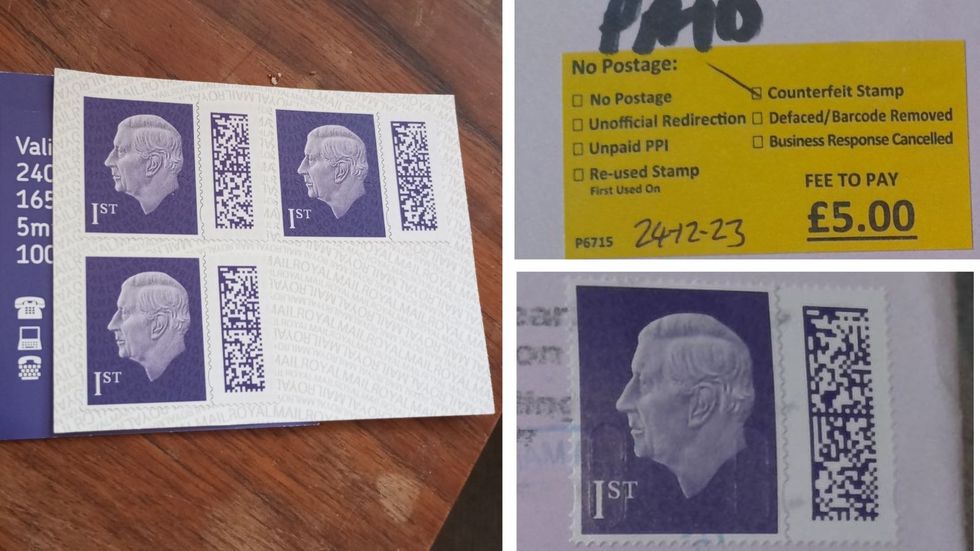
Mrs JB says she bought a book of eight stamps and used one to send to her granddaughter
|GB NEWS
When she went to pick it up from the delivery office, she found it was the very letter she sent herself weeks ago, using a stamp from the same book. Royal Mail had labelled it “counterfeit”.
Miss Adams contacted Royal Mail on January 10, informing them she had bought the stamps from Post Office, and requesting they investigate the matter.
The local Post Office staff have confirmed to GB News several customers have complained about stamps being bought in the shop later being deemed counterfeit.
Two separate Royal Mail delivery office workers have told GB News they see envelopes with counterfeit stamps “all the time” and both believe the stamps have often been bought from small shops which are not affiliated with Post Office.
Mrs JB*, from Wythall, Worcestershire says she bought a book of eight stamps from her local Post Office in December and used one to send her granddaughter a card.
Last week, her granddaughter called to thank her for the card, explaining she’d only just received it and had had to pay £5 to get it because the stamp was deemed counterfeit.
Mrs JB explained: “My granddaughter was worried other people who had been sent cards would have the same problem.
“I couldn’t understand why they’d hung onto it for a month and then charged £5. It’s just a standard book of eight stamps.”
Mrs JB reimbursed her granddaughter and rang the Royal Mail fraud department to explain she had bought the stamps from her local Post Office and would like a £5 refund. At the time of writing, Mrs JB has not had a response from the Royal Mail fraud department.

Joseph Whibley had to pay £2.50 to get his letter, having affixed the stamp himself, in early 2023
|JOSEPH WHIBLEY
Joseph Whibley, 71, bought a book of first class barcoded stamps from his local Post Office in Leicestershire at the beginning of 2023.
Mr Whibley had to send some paperwork and a stamped address envelope off to a company to update his sat nav.
Having not heard anything for a couple of weeks, Mr Whibley contacted the firm, who explained they had been directed to pay £2.50 to release the letter from the Royal Mail sorting office.
“I apologised and explained there was nothing wrong with the stamp,” Mr Whibley recalled. “He didn’t charge me for the extra fee, which was good of him.” The company said they would send the paperwork straight back, using the stamped addressed envelope which Mr Whibley had provided.
Around a week later, Mr Whibley got a card through the letterbox saying there was an envelope waiting for him at the delivery office, subject to a surcharge.
“I went up to the sorting office and asked them what it was about, and they said it was a counterfeit stamp,” he said. “I said, ‘Well, it’s not, because I put it on myself and I purchased it from Post Office.’”
Mr Whibley says the delivery office staff insisted the stamp was counterfeit, and demanded he pay the £2.50 charge to get the letter.
He showed his local postmaster the stamps, who assured him they were genuine and in mint condition.
Mr Whibley complained to Royal Mail in April 2023, explaining he had used a legitimate stamp bought from a legitimate Post Office. He said he received a letter back from Royal Mail, insisting there had not been a problem with their machinery and he would not be refunded.
He said: “I was really annoyed because Royal Mail didn’t want to know.”
Royal Mail’s response to the complaint, sent in May 2023 and seen by GB News, said: “From the information you’ve provided, it appears the stamp has been reused or are counterfeit.
“This may be because the stamp used didn’t appear to have been cancelled/franked when used previously, or a stamp was used that has been ‘washed’ using chemicals to remove postmarks and paper from previous usage.

Janet Freeman was 'very angry' to hear two friends had to pay £2.50 each for their post from her
|JANET FREEMAN
“It’s also possible that the stamp or stamps were purchased from a disreputable supplier. The use of a counterfeit stamp or reuse of a stamp is classed as fraud under the Fraud Act 2006.”
Janet Freeman, 70, bought two books of second class stamps last summer from her local convenience store which contains a Post Office in Birmingham.
In September, she found out they had been deemed “counterfeit” after two friends each informed her the letter had been withheld until they paid the £2.50 surcharge.
She told GB News: “I was very surprised then annoyed that it had happened. The whole situation has just made me angry.”
Ms Freeman says she has emailed Royal Mail around six times but has not had a response, and when she contacted Post Office, she was directed to take the matter up with Royal Mail.
Claire Green* said her husband bought eight books of eight stamps from a local supermarket in December so they could send Christmas cards. She only realised there was a problem with the stamps when five friends got in touch to say they’d had to pay £5 to get her card.
“I had no idea they were counterfeit. It’s truly shocking,” she told GB News. “I’m really upset. It’s made me look like a criminal.”
Mrs Green fears a lot of people will have been “too embarrassed” to tell her. She said: “I worry they will have thought, ‘There’s no point in upsetting her’. I think it’s atrocious.”
Having compared her stamps with genuine stamps, Mrs Green says you would need a magnifying glass to notice the difference.
She said: “I wrote 98 cards – I wasn’t looking at stamps to see if they were counterfeit. It just wouldn’t have occurred to me. I’d never even heard of it.”
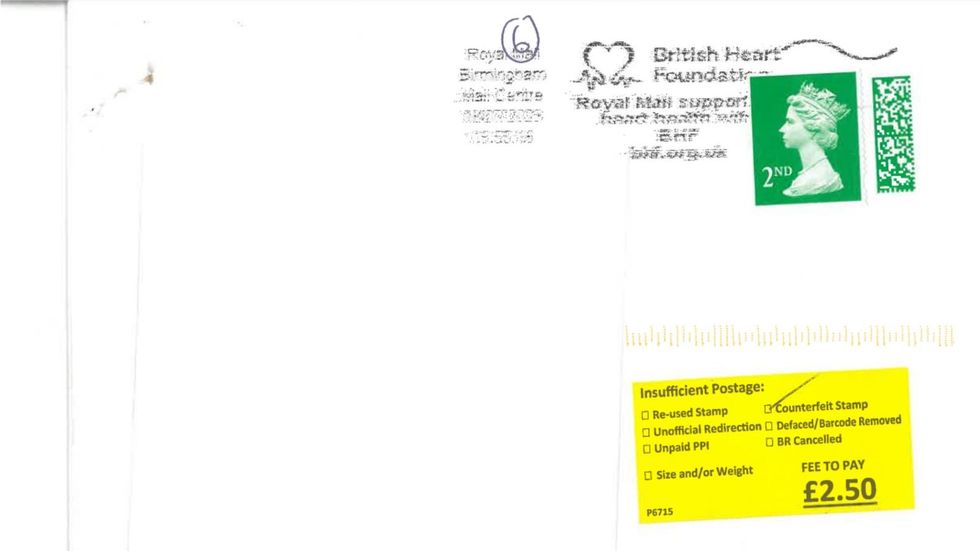
Janet Freeman bought the second class stamps in good faith but her relative was forced to pay £2.50 last summer
|GB NEWS
Mrs Green said now she is aware of the issue, she can see the texture of her stamps are flat, unlike the genuine stamps. GB News has seen several examples of the counterfeit stamps, and upon a close look, they contain differences in texture and colour.
Mrs Green said she feels “really sorry” for the shop owners, and blames Royal Mail for the error.
“They’re really good people in there and I trust them implicitly,” she said. “They’ve been there for a very long time and they’re all really hard-working.
“These people are really invested in their shop and in the community, so I’m sure it didn’t emanate from there.”
When the shop owners heard about the matter, they were “absolutely mortified” and offered to refund Mrs Green. She said: “We declined because it’s not their fault. They sold us the stamps in good faith.
“I feel there are a lot of people in the chain that are getting ripped off here.”
Mrs Green said she thinks it’s “ludicrous” Royal Mail are charging people £5 to receive letters sent with “counterfeit” stamps. Pointing out the cost of a first class stamp is £1.25, she said: “£5 – how can they justify that?”
Rachel Carlin, 66, bought two books of eight second class stamps last year from a well-known supermarket.
In July 2023, she used one of the stamps to send a birthday card to a relative and was shocked to learn they had been forced to pay £2.50 to receive it.
Ms Carlin, from Northamptonshire, said: “Initially, I thought the card must have been too big and I hadn’t put enough postage on, but it came back as a ‘counterfeit’ stamp. I was dumbfounded. You buy a book of stamps and assume they are genuine.”
Thinking it was strange, Ms Carlin showed the remaining book of stamps to a postman and several Post Office employees who said they were counterfeit, due to having a watermark ALM22L printed across it.
Having made enquiries at Post Office and the Royal Mail delivery office, Ms Carlin said she called Royal Mail, who directed her to instead complain to the supermarket.
She said: “They weren’t bought on the internet. I had bought them in the supermarket over the counter, from the till at the front of the store.”
Ms Carlin fears others had to pay to receive the post from her. She said: “I think a lot of people wouldn’t have said anything. How many people would have got cards and not say anything, because you think that person is using counterfeit stamps.”

Trevor Bailey says he bought the new stamp from his local Post Office
|TREVOR BAILEY
Trevor Bailey, 74, who lives in Nottingham, sent a letter to his sister in October last year. He reused an old envelope – sticking a label over the previous addressee - but attached a brand new stamp which he bought from his local Post Office.
Several weeks later, it still hadn’t arrived, and Royal Mail then said that due to insufficient postage, Mr Bailey’s sister would have to pay Royal Mail £2.50 to get the item delivered.
“It was just before they increased the charge to £5,” he recalled, explaining Royal Mail had claimed a “reused stamp” had been used.
Mr Bailey contacted Royal Mail to complain, and says he was then told the stamp was not “reused” but “counterfeit”.
Mr Bailey said he challenged the decision three times, and while no apology was made, Royal Mail did send him a book of first-class stamps.
Alison Braunston, 73, was very confused when she heard the birthday card she sent her friend had been delivered with a yellow “counterfeit” stamp label on it.
It was delivered through the door, with no surcharge to pay. Mrs Braunston says she bought a book of stamps from her local Post Office in southeast London.
She used the other stamps in the book without a hitch so was puzzled when she heard about the envelope. She said: “It’s a bit of a mystery really as to why they did that and who did that.”
Royal Mail began rolling out digital stamps, which feature a barcode at the side of the monarch’s profile, in February 2022.
Regular stamps without a barcode are no longer valid for postage. Customers can exchange non-barcoded stamps with the barcoded stamps via the Swap Out scheme.
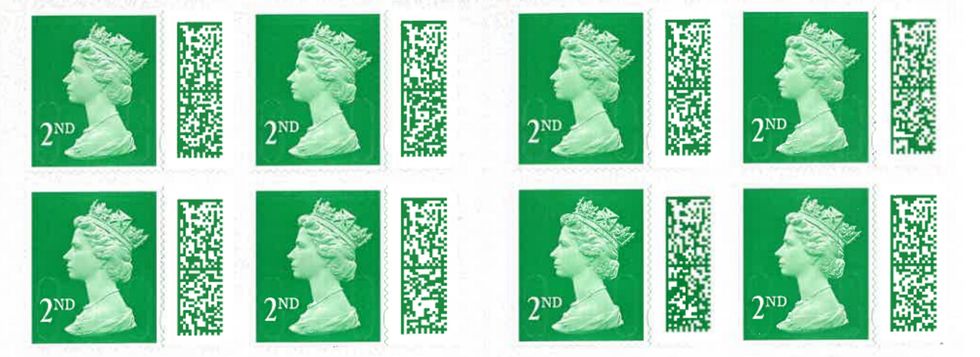
GB News has compared the 'counterfeit' stamps with legitimate Royal Mail stamps (pictured) and while there are differences, it can be hard to spot which is fake
|GB NEWS
In October 2022, Royal Mail said the unique barcodes now used on stamps can “facilitate operational efficiencies, enable the introduction of added security features and pave the way for innovative services for customers”.
Richard Burn, 59, says he exchanged his old-style non-barcoded second class stamps with valid barcoded stamps via the Swap Out scheme.
“I don’t use a lot of stamps but over the years you tend to accumulate them,” he told GB News.
Royal Mail swapped the stamps for barcoded versions, and he’s been using them throughout the year to send birthday cards to loved ones without any issues at all.
Mr Burn sent several Christmas cards last month and was shocked to hear one of his relatives had had to go to the Royal Mail delivery office and pay £5 to get the item, as the stamp had been deemed counterfeit.
Feeling “utterly indignant”, he told GB News: “I knew they weren’t counterfeit, or if they are, they’ve been given out by Royal Mail themselves.”
Mr Burn called Royal Mail to complain and was pointed to the website to fill in a complaint form. He says he is yet to hear back.
A Post Office spokesperson said: “Stamps are available to buy from a number of different sources. Post Office Ltd receives its stamps direct from Royal Mail’s secure printers.
“Customers who buy stamps at Post Offices are given an itemised receipt, and this will be required to investigate any allegations of fake stamps.”
A Royal Mail spokesperson said: “It is vital we can investigate any instance where a person believes their stamps have been incorrectly identified as counterfeit or pre-used.
“To do this, we require any customer who believes they have been incorrectly surcharged to send the envelope with the barcoded stamp attached to us, along with the exact location of where the stamp was purchased.
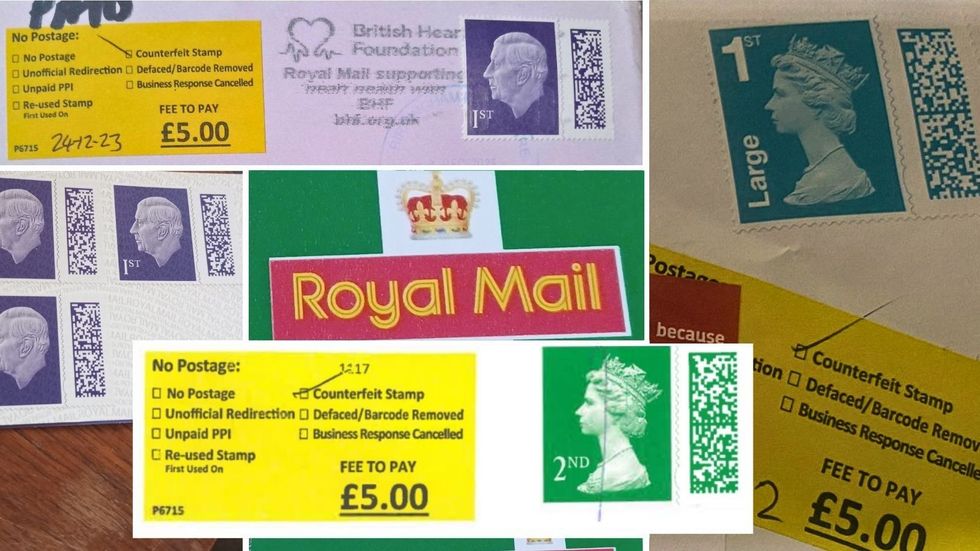
Royal Mail has applied 'counterfeit stamp' yellow stickers to the withheld envelopes
|GB NEWS
“We have a robust, multistage process in place when assessing whether barcoded stamps are genuine. This includes a thorough examination using specialist equipment, then a follow up inspection by a human before any stamp is marked as counterfeit or pre-used.
“Unfortunately, without seeing all of the envelopes used, it would be impossible to explain what happened in these cases but we will always happily review individual cases and if an error has been made then we will of course correct it.”
Royal Mail previously told GB News they had increased the charges for collecting post sent with counterfeit stamps to £5 on October 30 to act as a “meaningful deterrent”.
A Royal Mail spokesperson said: “Counterfeit stamps are illegal, extremely costly to our business and can disrupt our operational processes. The vast majority of our customers use the correct postage and will not be affected by these surcharges. In order to protect customers, we increased these charges on 30 October, 2023 to act as a meaningful deterrent to customers who use counterfeit stamps.
“We actively investigate fraudsters as we don't like to see our customers ripped off. We regularly monitor online marketplaces to detect suspicious activity and will contact the appropriate platform to request its immediate removal.
“We would always recommend that customers buy their stamps from reputable high street outlets. Stamps are also available directly from the Royal Mail online shop. Customers should always report any suspicious stamps to Royal Mail via our website, Action Fraud and to their local Trading Standards office.”
*Names have been changed.






